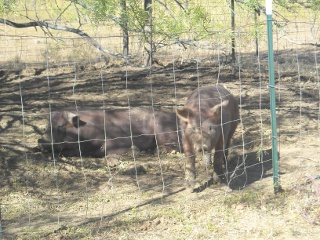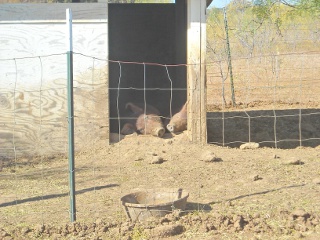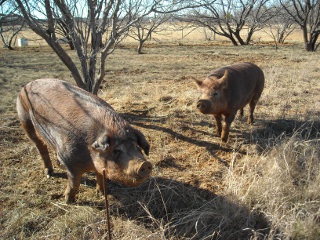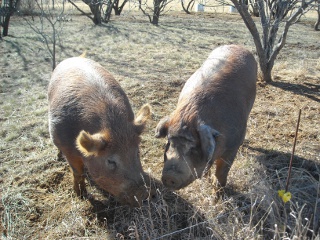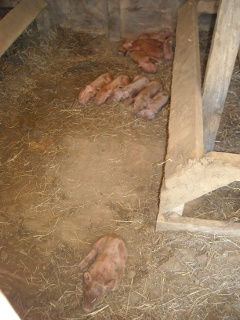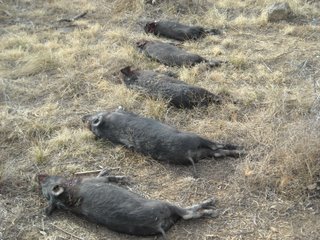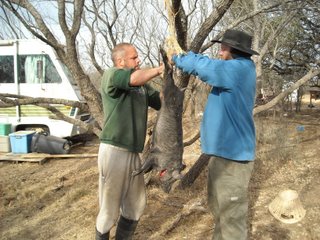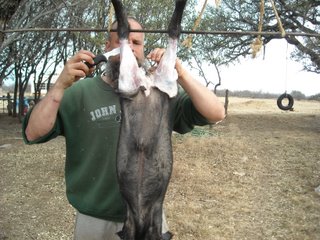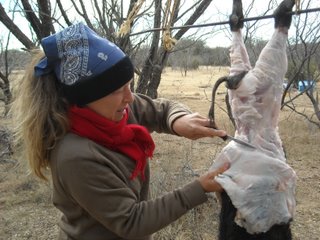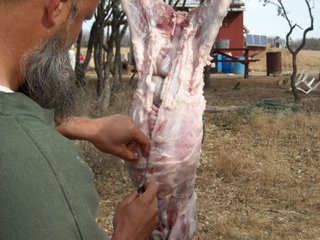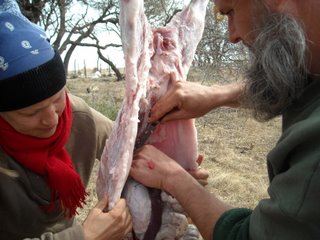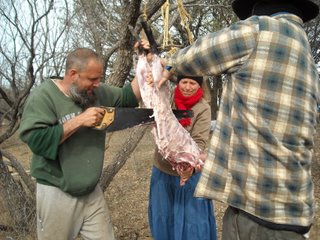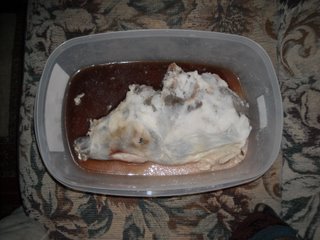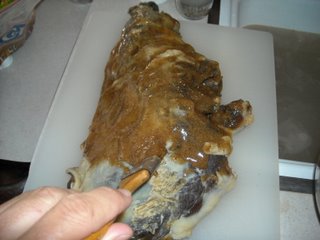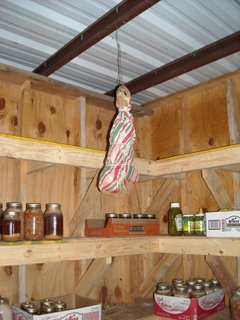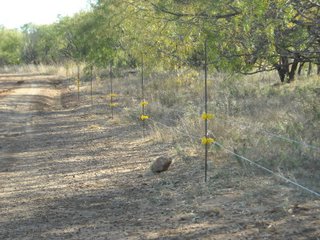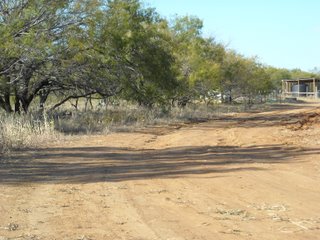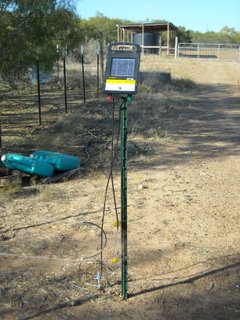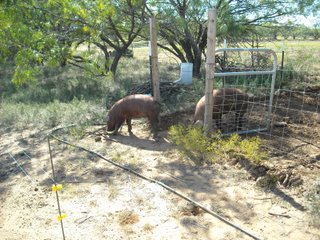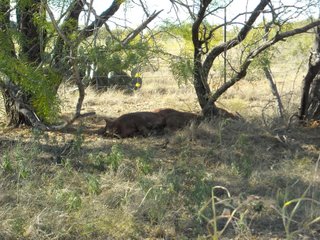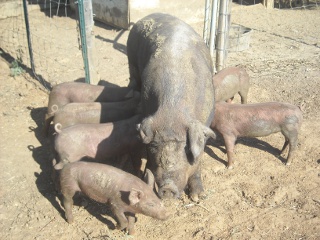
As most of our regular readers know, this is our sow, Missy. She had a litter of 11 piglets recently, of which 9 survived healthy and strong, thanks to God. Once the piglets were weaning age, we decided to sell all but one Dave currently calls “Runt Girl,” which we hope to mate with a boar traded to us from our neighbor, Michael. Missy also was the runt of her litter and a real survivor, enduring a couple of dandy injuries, so gentle, and a great mom. We debated on possibly putting her through one more round of mating but decided it would cost too much to keep her in food for those several months, and finding a boar her size would be difficult and probably expensive as well. The decision as to how soon to take her in to the butcher was pretty much made for us the day a gentleman and his son came out to buy two of our piglets. Missy turned into a mother bear and was giving Dave a hard time, even to the point of becoming dangerous. So Dave called the butcher and made an appointment to bring her in the next Monday morning.
Little side story, I don’t know if you’ve ever heard a pig squeal while being handled, but it really unnerved me the first few times. You would think they were being skinned alive. One day I was helping Dave capture a boy and girl piglet to be put into the truck cage and delivered to a local man. We both had battled some kind of food poisoning a couple of days before this and were feeling pretty weak, in addition to dealing with the debilitating Texas summer heat. It was very physically taxing for Dave after several tries to capture these little guys. But we finally got a system together where we would funnel them into their pig shed; and Dave would corner the one he wanted, and then tackle it. He tackled one, and picked it up; and it was kicking and squealing; and he turned it backwards and asked over the squealing, “Is this a boy?”; and being that I was so flustered from the noise and commotion and didn’t see the little boy parts, I said “No, it’s a girl”; and as soon as he let it go we could see it was a boy after all. Dave looked at me in disbelief and was so sick and exhausted, I was horrified! I bent down and threw my head in my hands and said, “Oh, I’m soooooo sorry, I thought it was a girl!!!!!!” I guess the way it was being held the little testicle sacks were tucked in somehow. Dave was very frustrated but was gracious with me because he saw how terrible I felt about it. Long story longer, that little boar escaped twice from its cage over the next 24 hours, and we had to do it all over again. But we were finally able to safely capture and sell the remainder of the piglets. Thank God for keeping everyone safe and healthy, and for bringing buyers for the piglets. We learned a lot through that whole experience.
Getting back to Missy: we still miss her; but, as you’ll see below, she continues to be a wonderful blessing from God. She was ready to be taken home from the butcher after about a week. Dave’s job of capturing and selling the piglets had mostly ended, but my job to preserve Missy had just begun. In an effort to keep costs down, as well as processing time, we chose to have much of the meat ground up and cubed. Generally, we do not run our freezer to keep any foods in storage indefinitely; but we did run the freezer just long enough for me to process everything via pressure canning. This time it took me about 2 1/2 weeks to get through it all because I had to miss a few days here and there to take care of other things. We only had to run the freezer about 6-7 hours per day to keep things cold enough; but that meant running the generator also, which can get expensive in a hurry; so I was on a mission to get it done as quickly as possible. I was also able to render all of the fat into lard (blog post coming on that, DV) and make soup stock out of all the bone and rib meat. (Dave has a phobia of getting sticky BBQ sauce on his face and fingers, so I just go ahead and simmer the meat off the rib bones; and it makes for delicious meat and soup stock!)
And here is the end result!
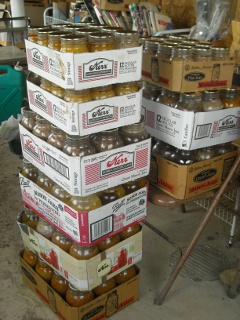
Included here are ground pork, mild and hot ground breakfast sausage, cubed pork chops, steaks, ham and shoulder meat, rib/bone meat, pork stock/broth and lard. We kept out some pork chops and steaks to BBQ over the couple of weeks I was processing it all. MMMMMMMMM! Delicious! And speaking of soup stock (or pork broth), I wanted to mention two things: I had borrowed a set of these stock pots from my neighbor, Danielle, and was so pleased with them that I bought myself a set. They have proven to be very decent quality and useful for all kinds of simmering/cooking/rendering, etc. at a great price – FYI.
And secondly, my friend, Shannon, wrote a great blog post on making homemade bone broth. In that post, there was another great link to an article regarding the amazing health benefits of homemade bone stock/broth. I highly recommend reading them when you have a moment.
Boy, I sure do appreciate Dave building that summer kitchen. It has made a world of difference in my canning experience, in having more room and keeping heat out of our camper.
So, thanks to God’s direct provisions and resources, we now have many more jars of homegrown pork meat, all processed and down in the root cellar, waiting to be eaten. It’s such a beautiful thing after a busy day on the farm to go down into the cellar and grab some of this and some of that of the Lord’s provisions to fix for supper, or any meal for that matter.
We look forward to many more pig litters and direct provisions from God, according to His will.
Susan
